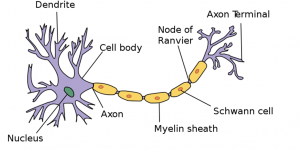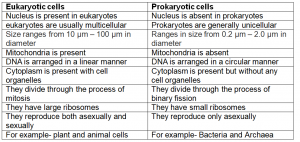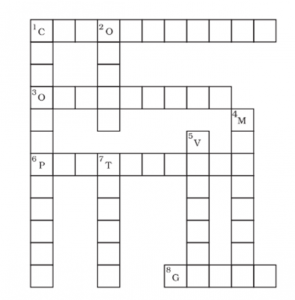NCERT Solutions for Class 8 Science Chapter 8 – Cell Structure and Functions, contains solutions to various questions in Exercise for Chapter 8. At the end of the Solutions, all the keywords and Notes which are important to understand Science Chapter 8 – Cell Structure and Functions, have been explained in a simple and easy to understand manner. NCERT Solutions for Class 8 help to check the concept you have learnt from detailed classroom sessions and application of your knowledge.
| Category | NCERT Solutions for Class 8 |
| Subject | Science |
| Chapter | Chapter 8 – Cell Structure and Functions |
Download NCERT Solutions for Class 8 Science Chapter 8 – Cell Structure and Functions
NCERT Solutions for Class 8 Science Chapter 8 – Cell-Structure and Functions – NCERT Exercises
Question 1
Indicate whether the following statements are True (T) or False (F).
(a) Unicellular organisms have one-celled body.
(b) Muscle cells are branched.
(c) The basic living unit of an organism is an organ.
(d) Amoeba has irregular shape.
Answer 1.
(a)T
(b)F
(c)F
(d)T
Question 2
Make a sketch of the human nerve cell. What function do nerve cells perform?
Answer 2.

Functions performed by the human nerve cell are:
- A nerve cell or a neuron is the basic structural unit of the nervous system
- It’s function is to transmit the messages or nerve impulses from the sensory organs to the brain and also from the brain to the receptors.
Question 3
Write short notes on the following:
(a) Cytoplasm
(b) Nucleus of a cell
Answer 3.
(a) Cytoplasm is the highly-viscous substance that fills the space between the plasma membrane and the nucleus in a cell. It is responsible for the exchange of the materials within the cell and various cellular processes also occur in it.
(b) The nucleus is the spherical body present in the centre of the cell. It acts as the control centre of the cell and contains the cell’s hereditary information.
Question 4
Which part of the cell contains organelles?
Answer 4.
Cytoplasm is the fluid portion of the cell which contains the cell organelles
Question 5
Make sketches of animal and plant cells. State three differences between them.

Three differences between plant and animal cells are
Question 6
State the difference between eukaryotes and prokaryotes.
Answer 6.

Question 7
Where are chromosomes found in a cell? State their function.
Answer 7.
The chromosomes are found in the nucleus of a cell.
They are responsible for carrying genes, which are the carriers of the hereditary information, from the parent to the offspring.
Question 8
‘Cells are the basic structural units of living organisms’. Explain.
Answer 8.
A cell is the basic structural and functional unit of all the living organisms that is capable of functioning independently. A single cell can perform all life functions therefore it called the functional unit of all living things. Cells may be unicellular or multicellular, they can replicate independently, contain genetic information for passing to the offspring. Just as the walls in our house are made up of bricks, in a similar manner the tissues in our body are made up of cells. Hence a cell is the basic structural unit of living organisms.
Question 9
Explain why chloroplasts are found only in plant cells?
Answer 9.
Chloroplasts are found only in plant cells because they contain a green pigment called chlorophyll that is required for the process of photosynthesis carried out by plant cells. Animal cells do not carry out photosynthesis as they cannot make their own food.
Question 10
Complete the crossword with the help of clues given below:


ANSWERS:
Across:
1.CHLOROPHYLL
3.ORGANELLE
6.PROTOPLASM
8.GENES
Down:
1.CHLOROPLASTS
2.ORGAN
4.MEMBRANE
5.VACUOLE
7.TISSUE
Topics Covered in Chapter 8 Cell-Structure and Functions Class 8 Science :-
- Discovery of the Cell
- The Cell
- Organisms show Variety in Cell Number, Shape and Size
- Cell Structure and Function
- Parts of the Cell
- Comparison of Plant and Animal Cells
Important Terms Relevant to understand NCERT Solutions for Class 8 Science Chapter 8 – Cell-Structure and Functions :-
Cell: A cell is the basic structural and functional unit of all living things that is capable of existing independently.
Pseudopodia: Pseudopodia are temporary arm-like projections that can change their shape and size and help in the movement of the amoeboid cell.
Cell membrane: A membrane that is made up of phospholipid bilayer and proteins and separates the interior of the cell from the surroundings is called a cell membrane
Nucleus: Nucleus is the central spherical body located in the cell which carries the hereditary information of the cell and is responsible for the growth of the cell.
Cell wall: Cell wall is the outer protective layer present in the plant cells only. It provides shape and turgidity to the plant cells.
Organelles: Organelles are tiny, specialized structures that perform specific functions of the cell and are located as freely suspended in the cytoplasm of the cell.
Nucleolus: Nucleolus is present inside the nucleus of the cell and is responsible for ribosome production. Also called the site of ribosome biogenesis.
Genes: Genes are the basic physical units of inheritance. These carry the genetic information from the parents to the offspring.
Chromosomes: The DNA is packaged into thread-like structures made of nucleic acids and proteins called chromosomes. They carry the genes.
Vacuole: Vacuoles are the membrane bound organelle. They might store water, nutrients, food or any other materials like waste products etc.
Chloroplasts: These are the organisms present in the plant cells that contain the pigment chlorophyll that is responsible for capturing sunlight and carrying out the process of photosynthesis.
Plastids: These are double membrane bound organelles that are responsible for manufacturing and storing food.
NCERT Solutions for Class 8 Science
- Crop Production and Management
- Microorganisms: Friend and Foe
- Synthetic Fibres and Plastics
- Materials : Metals and Non-Metals
- Coal and Petroleum
- Combustion and Flame
- Conservation of Plants and Animals
- Cell Structure and Functions
- Reproduction in Animals
- Reaching the Age of Adolescence
- Force and Pressure
- Friction
- Sound
- Chemical Effects of Electric Current
- Some Natural Phenomena
- Light
- Stars and The Solar System
- Pollution of Air and Water